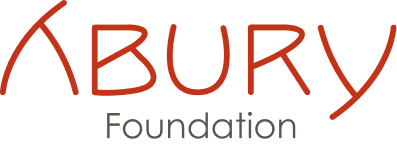Maha Alouani is the director of the Marrakech Heritage Museum. After studying International Relations at Queen Mary University of London, she returned to her native Morocco to start her career. Her role as a museum director sparked a deep curiosity about Moroccan history and the ethnographic characteristics of the Berber tribes, which she has been passionately exploring ever since.
A Cultural Curiosity from an Early Age
Born and raised in Marrakech, Maha Alouani was exposed to different cultures from an early age, both at her international primary school in Morocco and during her time in the UK. This multicultural upbringing fostered her deep interest in global issues and cultural anthropology.
In addition, Maha Alouani is deeply concerned with the politics of current conflicts in East Africa and the Horn of Africa. She speaks several languages and is a passionate fan of Malian music. She is currently studying the Tifinagh alphabet and working on two books: one on 18th century Andalusian embroidery and another on traditional Berber carpets.
An Interview with with Maha Alouani: On Moroccan Heritage, Intercultural Exchange, and the Importance of Craftsmanship
Maya, please describe yourself in three words.
Curious, clumsy, optimistic.
We believe that hands tell stories. What do your hands say about you?
That I'm obsessed with antique Moroccan silver rings... and hand cream!
What was the last thing you made with your hands?
I'm curating a small gallery of Moroccan antiques. While selecting smaller pieces - silver and jewellery accessories - I noticed that some earrings and brooches were missing hooks. I spent the afternoon repairing them and now they're ready to wear again!
If you could do anything with your hands, what would it be?
What if touching an object could give you a database of information about it? Some might see this as sensory overload, but imagine being able to dive into an object's past just by touching it. You could see how it was made by a craftsman and, for a moment, experience the environment and time in which it was created. It would be like teleporting to its origin every time you touched it - a deeply enriching and fulfilling experience.
At ABURY, we strongly believe in equality and the value of sharing. How do you think intercultural exchange benefits our global society?
I think intercultural exchange is always beneficial! Think about the joy you feel when you learn something new - about any subject. There's so much we can learn from each other, especially when we come from different backgrounds.
I spend a lot of time researching historical links between different groups of people, particularly by studying patterns in textiles. For example, the diamond pattern can be found on every continent - from Viking caves in Denmark to Berber carpets in Morocco. In both cultures, the diamond symbolises the female body.
Another example is the similarity between Celtic penannular brooches and Berber fibulas, which were used to fasten clothing and were an essential part of traditional women's clothing. It's widely believed that we have more in common than what divides us, and ethnological studies can teach us this. © Photo via Maha Alouani
© Photo via Maha Alouani
You were born in Morocco but have also lived abroad. What do you think makes Morocco different from other countries? What makes your culture unique?
Honestly, I can't say, because I can't compare something I haven't experienced. Morocco has more than a hundred different tribes, each with its own culture, so it is difficult to define a single "Moroccan culture". And I'm far from knowing all the cultures in Morocco, let alone those in other countries!
How would you describe the flavors of Morocco, and what’s your favorite?
A popular Moroccan dish is terda. The main ingredients are bread, beans, lentils, tomatoes and onions. The idea is to make a meal from the week's leftovers to share with family and friends. It's resourceful, but still has that world-famous Moroccan flavour.
I see terda as a reflection of the Moroccan way of life - turning simple ingredients into something extraordinary. Resourcefulness and sharing are deeply rooted in Moroccan values, from repurposing old clothes as cleaning rags to weaving spectacular boucherouite carpets from recycled fabrics.
You run the Heritage Museum in Marrakech. How can Moroccan heritage inspire other cultures to coexist peacefully?
The Morocco we know is a product of diversity, and I learn this every day as I study the handcrafted artefacts at the Heritage Museum in Marrakech.
As part of the Silk Road, which revolutionised world trade, and bordered by the Atlantic and the Mediterranean, Morocco has always been a crossroads for many cultures. This is reflected in the diversity of Moroccan craftsmanship. For example, there are striking similarities between the embroidery of Fez and that of Romania and Croatia.
A closer look at the history of embroidery reveals that Andalusian embroidery was introduced to Morocco in the 15th century, when exiled embroiderers from the Balkans taught the young daughters of the aristocracy in northern Morocco.
Perhaps, through examples such as embroidery, we can see that we have more in common than we think - if only we take the time to look. There is beauty in diversity. Fez embroidery is now a symbol of the fashion industry, and we owe it to the exiled embroiderers from the Balkans who settled in Morocco.
Maha Alouani at TEDxMarrakesh about "Coexistence or No Existence"






Share: